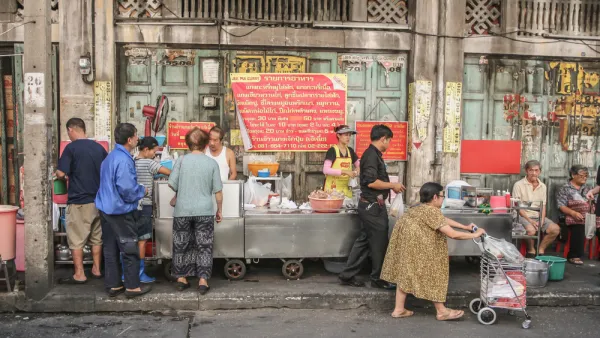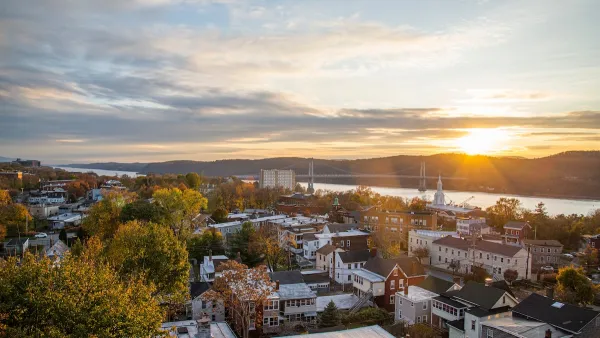In the latest entry in a series on informal urban livelihoods, Sally Roever of WIEGO provides insight into how planners can better understand, acknowledge and manage street vending through the development of appropriate policies and best practices.
"Street vending has persisted for centuries all over the world, despite a multitude of efforts to curtail it," writes Roever. As the barriers of entry are virtually non-existent, and since it provides easy access to curbside consumers, street vending appeals not only to individuals seeking basic survival, but also to more seasoned entrepreneurs looking to make an extra dollar. Much to the chagrin of big business and other elites, however, street vendors compete for prime city space.
"Street vendors strategically locate their workplaces in urban areas with steady pedestrian flows, often in central business districts or near crowded transport junctions." Aside from economic competition, unregulated street vending can lead to overcrowding, aggravating "traffic congestion, solid waste management, and public health" matters, adds Roever. Referring to two case studies, she attempts to demonstrate how planners can balance competing demands by city stakeholders, including traders, with innovative and participatory approaches.
The first example explores interventions at the national level, namely the formulation of an unprecedented type of bill of rights for street vendors in India. The passage of this bill was made possible by earlier policy efforts at the ground level spear-headed by groups such as National Association of Street Vendors of India (NASVI) and the Self Employed Women's Asssociation (SEWA). And the second example looks at a local project in Durban, South Africa's busy Warwick Junction, aimed at ameliorating congestion and design matters. According to Roever, "[t]he National Policy in India, and the Warwick project in Durban, have had a considerable impact on urban livelihoods."
She concludes, "[the] key innovation in both Durban and Bhubaneswar was to recognize that it makes sense to keep street vending in natural market areas of the city."
FULL STORY: How street vendors and urban planners can work together

National Parks Layoffs Will Cause Communities to Lose Billions
Thousands of essential park workers were laid off this week, just before the busy spring break season.

Retro-silient?: America’s First “Eco-burb,” The Woodlands Turns 50
A master-planned community north of Houston offers lessons on green infrastructure and resilient design, but falls short of its founder’s lofty affordability and walkability goals.

Delivering for America Plan Will Downgrade Mail Service in at Least 49.5 Percent of Zip Codes
Republican and Democrat lawmakers criticize the plan for its disproportionate negative impact on rural communities.

Test News Post 1
This is a summary

Test News Headline 46
Test for the image on the front page.

Balancing Bombs and Butterflies: How the National Guard Protects a Rare Species
The National Guard at Fort Indiantown Gap uses GIS technology and land management strategies to balance military training with conservation efforts, ensuring the survival of the rare eastern regal fritillary butterfly.
Urban Design for Planners 1: Software Tools
This six-course series explores essential urban design concepts using open source software and equips planners with the tools they need to participate fully in the urban design process.
Planning for Universal Design
Learn the tools for implementing Universal Design in planning regulations.
EMC Planning Group, Inc.
Planetizen
Planetizen
Mpact (formerly Rail~Volution)
Great Falls Development Authority, Inc.
HUDs Office of Policy Development and Research
NYU Wagner Graduate School of Public Service





























